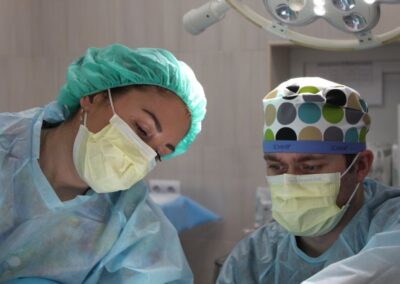Take the Opportunity for Education and Developing Respect
I was talking to a hospital Chief Medical Officer (CMO) recently who related the following story:
A patient on post-operative day 2 suddenly developed a brief seizure that was witnessed by the attending physician. The physician elected to treat the patient conservatively and the patient did well with an unremarkable hospital course. However, one of the staff nurses felt that a CT scan should have been done. Instead of expressing her feelings to the attending physician, she spoke to a resident physician stating that the attending physician was wrong, and that not ordering the scan in this situation constituted inappropriate care for that patient. Of course, the story ultimately got back to the attending physician, who was angered and filed a complaint against the nurse. He also berated the resident physician. To make matters worse, the attending physician contacted the hospital CEO and threatened to move his future patients to the competing hospital unless that nurse was immediately fired.
Now, the CMO has a mess on his hands with upset nurses and physicians, and threats of losing patients from the service.
This is not an uncommon situation, and one which we all have unfortunately experienced while managing healthcare teams. Resolving this matter, if it ever truly gets resolved, will likely require several meetings and multiple unpleasant encounters. How can we best proactively deal with these issues with our medical team, and at the same time, maintain the best interest of the patient, who in this case did fine and probably had no idea this conflict even occurred?
Choosing the Right Battles
First, I have rarely found it productive to try to get into a clinical arbitration of “Who is right and who is wrong?” Similarly, it is not helpful to get into the doctor/nurse responsibility discussions, or even worse, “Who’s practicing medicine here?!” That discussion is not necessary and typically counterproductive.
In the above example, both the attending and the nurse did things they thought were right. Importantly, such behavior is not conducive to good teamwork and optimal patient care.
The management challenge is how to handle differences in opinion amongst the healthcare team members, all of whom bring experience and knowledge (value) to the table. All team members ultimately have the same goal of delivering outstanding care. Differences will occasionally but inevitably occur during the course of prudent patient care. What should be our general approach to managing these situations and minimizing the collateral damage that could result?
Principles for Managing Different Opinions Within Healthcare Teams
I believe the following principles can be very helpful when dealing with differences in opinions within the healthcare team:
First and most importantly, we must establish and encourage a culture where it is okay for all team members, physicians, nurses—every person involved in patient care—to have the opportunity to question each other without fear of retribution or anger.
Secondly, we need to reaffirm at these times that our first responsibility is always the welfare and best interests of the patient. Undoubtedly, though, both parties will probably insist that they do have the patient’s best interests in mind and the other party doesn’t. That’s not helpful. Different opinions and perspectives on healthcare are inevitable, and arguably, welcome.
This unfortunate situation gives us the opportunity to make some lemonade out of lemons. Whenever there is a difference of opinions, one or both of the following two opportunities will likely exist. Both can be very constructive toward the overall goal of well-performing teams and excellent patient care:
There is an opportunity for education regarding how one can better take care of the patient. Open discussion from a constructive, teaching perspective can be very valuable to improve the clinical competencies of all members of the team. Such discussions should always be encouraged.
Also, and perhaps more importantly, this is an opportunity to reinforce the importance of respecting the other team members and empowering those persons’ judgment. Perhaps that person saw something going on with the patient that the other provider did not.
Over time I have come to value that “little voice inside my head” that tells me something is not right. That “voice” is the result of many years of experience, seeing many patients, and its value cannot and should not be ignored. That “voice,” of course, is not always correct, but it should always be acknowledged. As we all have discovered, many times these thoughts cause us to consider things that we might have missed and may lead to better care.
Developing the Right Culture Within the Healthcare Team
We can spend many nonproductive and painful hours getting into discussions with our staff when differences in opinions arise. The best thing to do is to develop a culture on how to deal with these differences of opinion and how best to manage them. When they do occur, we have opportunities for either education or appreciating the value of the judgment of another colleague. Such positive resolution is good and typically will lead to improved patient care and a better functioning team in the future.
Incorporating such a culture into our day-to-day patient care will improve relations amongst the team members and can obviate the need for such escalations to occur in the first place.
Let’s embrace these differences in opinion. They are good.
After all, don’t we have the same goal in mind?
Excellent patient care.
Maybe that’s why we have a team in the first place.
If managing your healthcare teams has been a struggle for you, reach out to me to learn more about my chief medical officer mentorship and training services.




